5 Calibration Tips for Remote Pest Monitoring Systems
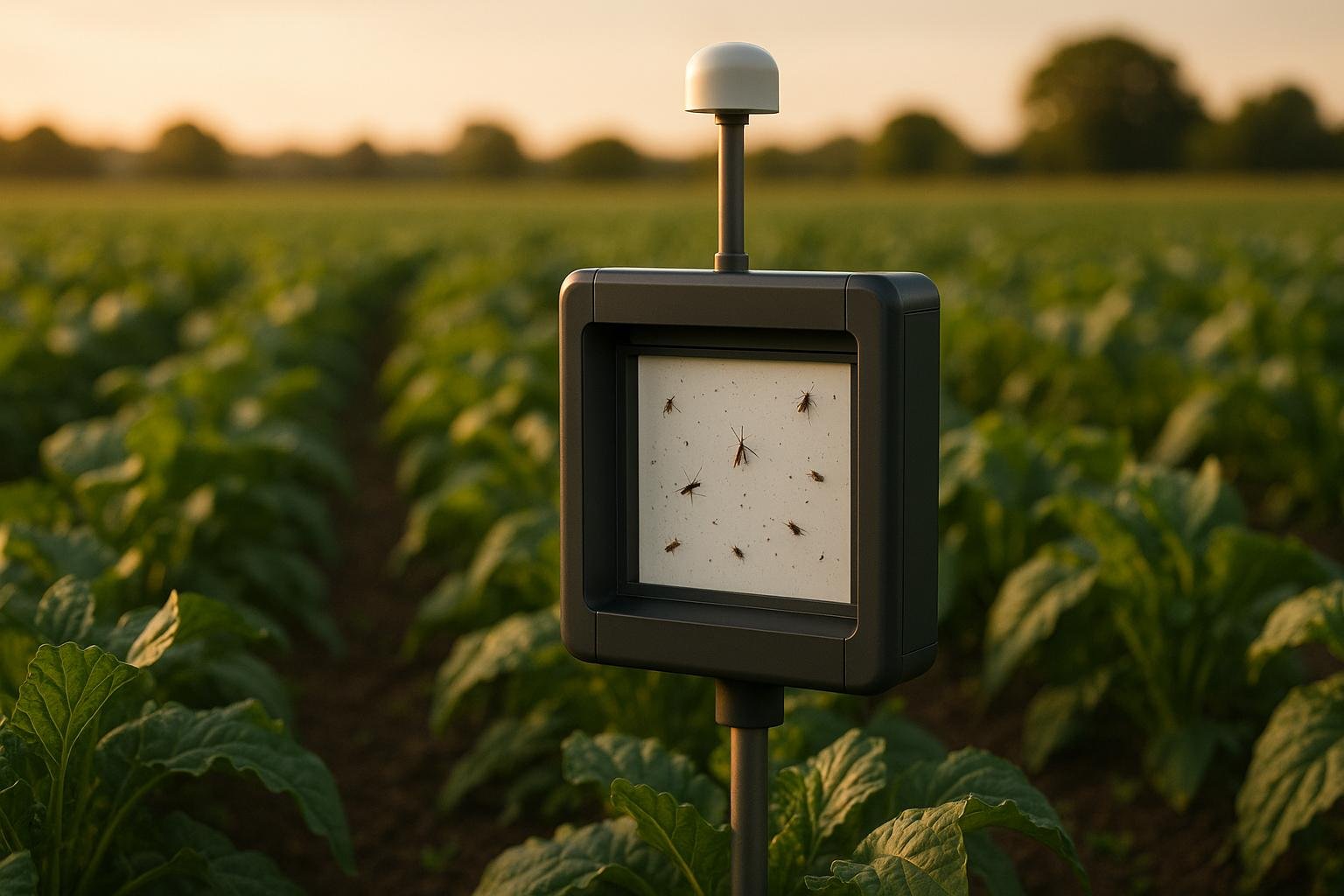
Proper calibration of remote pest monitoring systems is critical to reducing crop losses and ensuring efficient pest management. Without it, you risk overusing pesticides, poor pest control, regulatory issues, and lower crop yields. Here’s how you can keep your system accurate and reliable:
- Regular Maintenance: Schedule routine checks for sensor damage, dust buildup, and calibration drift.
- Environmental Adjustments: Tailor sensor settings to local conditions like temperature, humidity, and dust levels.
- Weather Adaptation: Protect sensors from extreme weather and recalibrate for seasonal changes.
- On-Site Testing: Verify sensor accuracy with manual tests and document results for future reference.
- Automated Solutions: Use self-calibrating sensors and automated alerts to simplify upkeep.
Quick Fact: Proper calibration can cut pesticide use by up to 50%, saving money and protecting the environment. Now, let’s dive into the details.
Tithonus: Real-Time Smart Pest Monitoring Detection System for Urban Farming with Farmbot & YOLOv5

1. Basic System Calibration Requirements
To ensure accurate pest detection, it’s crucial to calibrate sensors by fine-tuning each parameter. Modern systems often rely on a variety of sensors, each requiring its own calibration protocol for precise operation.
Key Sensor Settings
Effective pest monitoring hinges on properly calibrated sensor parameters. For instance, when detecting rodents, ultrasonic and infrared sensors must be adjusted to distinguish real pest activity from background noise like environmental sounds or movement. Once parameters are set, attention should shift to sensor placement and establishing baseline readings.
Setup Guidelines
"Monitoring devices should be seen as alert systems"
Follow these steps to complete the setup process:
-
Initial Placement Configuration
Start by mapping out the monitoring area. Arrange sensors in a strategic grid pattern, ensuring they cover all critical zones. Use placement guidelines to maximize the system’s effectiveness. -
Baseline Calibration
Establish reliable baseline readings by:- Setting sensitivity levels as per manufacturer recommendations.
- Running controlled tests to confirm sensor accuracy.
- Recording baseline data for future comparison.
-
Environmental Adjustments
Tailor sensor settings to local conditions by:- Adjusting thresholds to suit greenhouse or specific monitoring environments.
- Calibrating temperature and humidity sensors to match the local climate.
- Fine-tuning moisture sensors based on environmental factors.
Proper calibration can significantly reduce pesticide usage - by as much as 50%. Regularly verifying baseline settings ensures the system continues to deliver consistent performance and reliable pest detection over time.
2. Weather and Climate Adjustments
Environmental conditions play a significant role in the accuracy of sensors. Factors like temperature shifts and humidity can directly impact both pest activity and sensor performance. For instance, global temperatures have risen by 1.1°C since the late 1800s, adding another layer of complexity to maintaining sensor reliability.
Managing Weather Impacts
Temperature Management
To ensure sensors perform accurately in varying temperatures, consider the following:
- Allow sensors to stabilize at their operating temperature through pre-conditioning.
- Use materials and designs that minimize the effects of temperature swings.
- Install protective enclosures in areas prone to extreme heat or cold.
Humidity Control
Humidity can interfere with sensor calibration and functionality. Steps to mitigate these issues include:
- Monitoring even minor moisture changes that could impact calibration.
- Using IP-rated enclosures to shield sensors from moisture exposure.
"Humidity can cause moisture accumulation, which affects the performance of sensitive equipment. High humidity levels can lead to corrosion, electrical short circuits, and the deterioration of calibration standards."
By addressing these environmental challenges, sensors can deliver more consistent and accurate data.
Data-Driven Calibration
Beyond basic calibration, integrating environmental data into recalibration processes is essential for maintaining sensor precision. For instance, in corn monitoring systems, recalibration is crucial when moisture levels shift by 2.5%, as this adjustment helps keep yield monitor errors below 5%. This becomes particularly important when harvesting corn with moisture levels exceeding 20%.
Dust Management
Dust and airborne particles can interfere with sensor readings, leading to inaccuracies. To tackle this, implement these strategies:
- Install air filters to reduce particulate exposure.
- Schedule regular sensor cleanings.
- Use sealed enclosures to protect sensors from dust intrusion.
"Ambient temperature sensors are indispensable tools in modernized agriculture, playing a pivotal role in precision farming, crop health monitoring, efficient resource management, and risk mitigation." - Rika Sensor
Combining temperature data with soil moisture readings provides a more complete picture, ensuring that pest detection remains accurate even as weather conditions fluctuate. This integrated approach supports precision in agricultural practices while adapting to environmental changes.
🚀 Ready to Reinvent Your Garden?
Join thousands of homeowners who have transformed their gardens using our AI design tool. Upload one photo to explore endless possibilities.
Get your AI garden designs →3. Maintenance Schedule Setup
Keeping up with regular maintenance is key to ensuring system accuracy and minimizing false readings.
Automated Check Reminders
Automated reminders are a game-changer when it comes to maintaining calibration schedules. With modern calibration management systems, you can automate this process entirely. In fact, 95% of reviewers have highlighted the importance of automated notifications in maintaining system accuracy.
Here’s how you can set up an effective automated reminder system:
- Configure Alert Thresholds: Define specific rodent activity levels that, once exceeded, trigger immediate alerts. This way, you can act quickly without needing to constantly monitor the system manually.
- Plan Routine Inspections: Schedule regular checks for sensor damage, battery health, connectivity issues, and sensitivity adjustments.
"GAGEtrak pays for itself ten-fold every year… without GAGEtrak, this job would be impossible." - Kevin Brewis, Edelbrock
Automated systems have already proven their worth in real-world scenarios. For instance, in Ireland, Microshare implemented automated monitoring for 25,000 traps. This shift streamlined operations, moving from labor-heavy processes to a more efficient, materials-focused approach. These automated reminders also pave the way for fine-tuning calibration to match seasonal variations.
Season-Based Timing
Beyond automation, tailoring your calibration schedule to seasonal changes can make a big difference. Weather shifts - like spring rains or summer heatwaves - can directly affect sensor performance. Pest activity also tends to rise and fall with the seasons. To keep your system accurate, recalibrate during times of rapid environmental change.
Key seasonal maintenance tasks include:
- Inspecting sensors for debris buildup.
- Evaluating how environmental conditions (like humidity or temperature) impact performance.
- Recording calibration data to spot long-term trends.
sbb-itb-4d6a8dd
4. On-Site Testing Methods
Performing regular on-site testing helps ensure sensors remain accurate and can catch calibration issues early, preventing potential performance problems.
Manual Verification Tools
To check sensor accuracy, refer to the manufacturer’s guidelines and use the appropriate tools for the job. Key steps in the verification process include:
- Visual Inspection: Look for physical damage, debris, or anything unusual that might interfere with sensor readings.
- Zero-Point Calibration: Confirm that each sensor correctly identifies its baseline before conducting tests.
- Range Testing: Test the sensor’s performance across its full detection range.
For soil moisture sensors, verification clips offer a straightforward way to test accuracy without needing to remove the sensors from their monitoring spots.
"Testing and verification of position sensors are crucial steps to ensure their accuracy, reliability and compliance with specifications."
- Charles Palmer, Process Control Specialist and Lecturer at Charles Palmer Consulting (CPC)
Test Result Records
Once you’ve verified sensor performance, make sure to document everything thoroughly. Keeping detailed records helps track performance trends and identify potential issues over time.
Key details to include in your logs:
- Date and time of the verification
- Test readings alongside reference values
- Environmental conditions during testing (e.g., temperature, humidity)
- Calibration adjustments made during the process
Always compare results from data loggers with those from calibrated reference devices under similar conditions.
| Test Parameter | Documentation Requirements |
|---|---|
| Initial Reading | Baseline value before adjustment |
| Reference Value | Reading from a calibrated tool |
| Final Reading | Value after calibration |
| Environmental Factors | Temperature, humidity, and time |
| Adjustment Details | Specific changes to calibration settings |
Review these records weekly to spot any drift in sensor accuracy and determine when recalibration might be necessary.
5. Sensor Drift Management
Over time, sensor drift can distort readings, leading to false pest detections and unnecessary pesticide use. Addressing this issue is key to keeping pest monitoring systems accurate and efficient.
Data Pattern Analysis
One effective way to manage sensor drift is through careful analysis of data patterns. By monitoring for gradual deviations in baseline readings under stable conditions, you can identify anomalies early. Many systems rely on Statistical Process Control (SPC) charts to flag measurements that fall outside normal variations. This approach has proven effective in pest monitoring, with studies showing a 15–30% reduction in unnecessary pesticide applications. This translates to potential savings of $20–60 per acre annually.
Auto-Correction Systems
Today’s advanced pest monitoring systems are equipped with automated features to correct drift, reducing the need for constant manual adjustments. These technologies include:
- Self-Calibrating Technology: Sensors with built-in references and machine learning capabilities automatically adjust for drift in real time.
- Digital Twin Integration: Virtual models simulate expected sensor readings, identifying drift before it impacts pest management.
- Redundant Sensor Networks: Multiple sensors validate one another's readings, ensuring greater accuracy.
- Environmental Compensation: Systems adjust for variables like temperature and humidity to maintain precision.
- Weighted Averaging: Algorithms weigh the reliability of individual sensors to deliver more accurate results.
For best results, ensure your system keeps detailed logs of all adjustments. These logs are essential for ongoing system optimization and troubleshooting. Research supports the effectiveness of automated calibration methods, with PEST-based systems reducing root-mean-square errors by a factor of 2 to 3 in various applications. This level of automation pairs seamlessly with AI-driven advancements, which will be explored in the next section.
AI Integration Benefits
AI is revolutionizing the way remote pest monitoring systems operate by simplifying calibration management and streamlining system maintenance. With the help of advanced AI-powered tools, sensor data patterns are analyzed in real time, allowing for more accurate pest detection and easier upkeep.
AIGardenPlanner's Pest Management Features
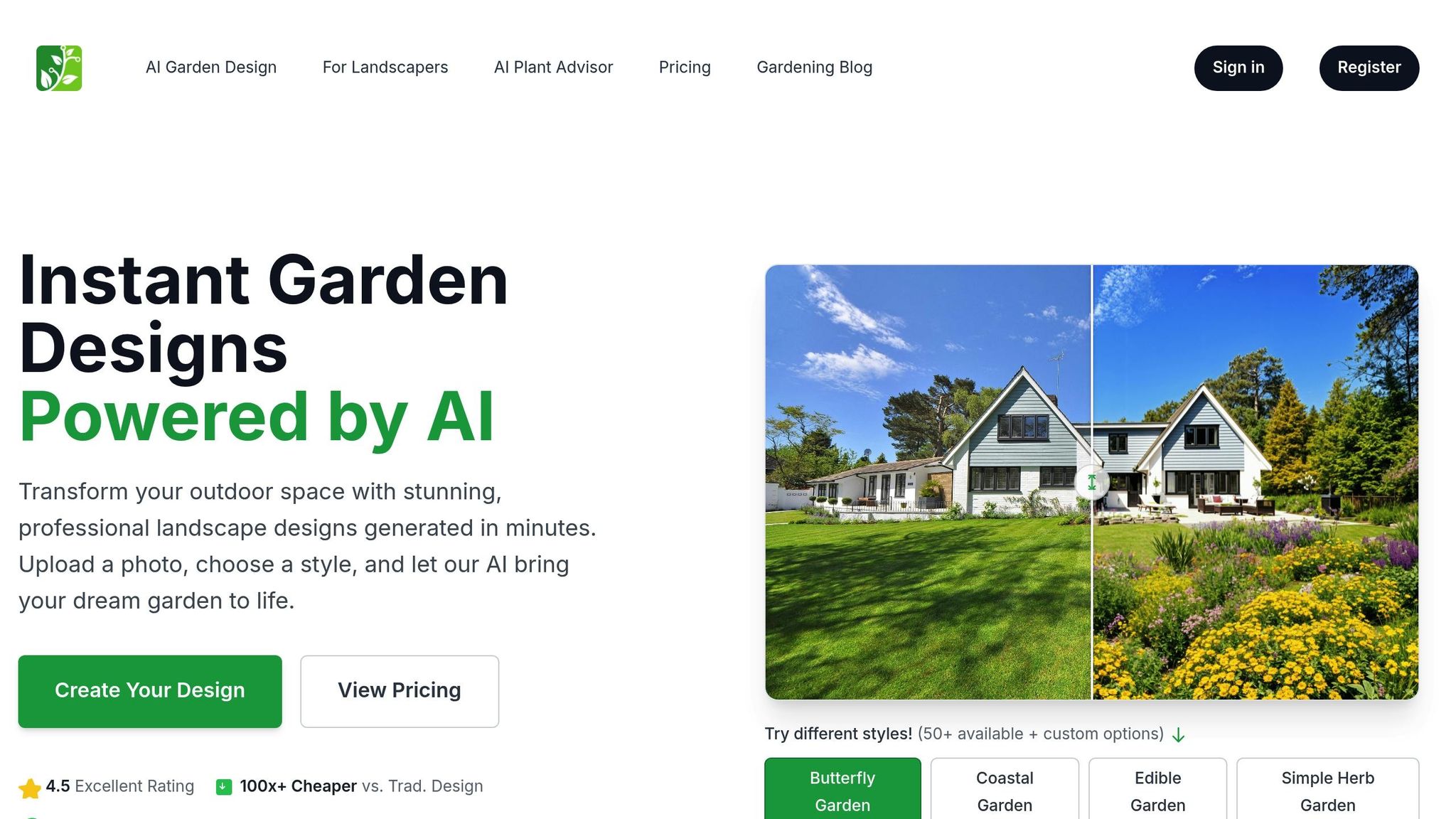
AIGardenPlanner takes pest management to the next level by combining real-time data on pests and plant health with AI-driven analytics. This integration provides actionable insights that enhance garden management:
| Data Type | Analysis Capabilities | Benefits |
|---|---|---|
| Pest Activity | Real-time detection and population tracking | 30–50% improvement in early detection rates |
| Plant Stress | Continuous monitoring of plant health signals | Targeted recommendations for interventions |
| Environmental Conditions | Climate and weather pattern analysis | Region-specific pest strategies |
| Sensor Performance | Automated drift detection and calibration alerts | 70% fewer manual inspections needed |
These insights go beyond just identifying pests. They help optimize maintenance schedules and intervention strategies. For instance, the platform tailors its recommendations to specific local climates and pest profiles. This approach has led to a 40% reduction in unnecessary pesticide use, ensuring effective pest control without overuse of chemicals.
AI-Based System Upkeep
In addition to its pest management capabilities, AIGardenPlanner uses AI to maintain system reliability through predictive analytics and automated monitoring. This ensures that sensors remain accurate and functional over time.
Key features include predictive maintenance scheduling, automated drift detection, and smart environmental adjustments. By identifying potential calibration issues before they occur, the system ensures long-term accuracy. It also adapts to changing environmental conditions, suggesting adjustments when sensor readings deviate.
AIGardenPlanner's ability to learn from historical data makes its predictions sharper over time. Whether it's seasonal shifts or unexpected changes in conditions, the platform ensures consistent monitoring accuracy year-round.
For commercial users, the benefits are clear. Many have reported significant improvements in pest management efficiency and lower maintenance costs. By integrating pest tracking with plant health data, AIGardenPlanner offers a comprehensive solution that not only keeps systems running smoothly but also delivers deeper insights for overall garden care.
🎨 Visualize Your Dream Garden Today!
Transform any outdoor space into a professional landscape design in minutes. Just upload a photo, choose your style, and let our AI do the rest.
Start your garden transformation now →Conclusion
Getting calibration right requires a careful mix of routine upkeep and cutting-edge tools. For instance, PEST-based methods have been shown to reduce error rates by over 50%.
Three key elements ensure effective monitoring:
- Regular Maintenance: Routine checks and recalibration keep systems performing as they should.
- Data-Driven Insights: AI-powered analytics provide valuable performance data while factoring in environmental conditions.
- Automated Solutions: Predictive maintenance and drift detection help address issues before they escalate.
These elements work together to uphold the calibration practices discussed earlier. Tools like AIGardenPlanner take it a step further, offering automated monitoring and predictive analytics that simplify the entire process.
Beyond improving accuracy, proper calibration can cut pesticide use by 40%, which is a win for both the planet and your bottom line. As technology advances, AI-powered calibration is shaping up to be a cornerstone for maintaining reliable systems over the long haul.
FAQs
How does regularly calibrating pest monitoring systems help reduce pesticide use?
Regularly calibrating remote pest monitoring systems is key to ensuring they detect and report pest activity accurately. When these systems are functioning properly, they can pinpoint infestations early, allowing you to focus treatments precisely where they’re needed. This approach minimizes the need for broad pesticide applications, saving time and cutting down on unnecessary resource use.
Precise monitoring also helps avoid excessive pesticide use, which can negatively impact beneficial insects and the surrounding environment. Over time, this not only supports healthier ecosystems but also encourages more sustainable pest management practices.
How can I adjust pest monitoring sensors to work effectively in different weather and climate conditions?
To keep your pest monitoring sensors working reliably across different weather and climate conditions, here are some practical tips to follow:
- Calibrate Regularly: Periodically calibrate your sensors to address any shifts caused by temperature or humidity changes. This ensures your readings stay accurate over time.
- Shield Against Harsh Weather: Protect your sensors with weatherproof enclosures or shields to guard them from rain, snow, and direct sunlight, which can impact their performance.
- Choose Placement Wisely: Install sensors in stable environments, steering clear of areas with excessive wind, heat, or moisture that could skew their readings.
- Adapt to Seasonal Changes: Adjust sensor settings to align with seasonal trends, like higher humidity during the summer or colder conditions in the winter months.
- Stay on Top of Maintenance: Clean your sensors regularly to remove dirt, debris, or even pests that might disrupt their functionality.
By sticking to these practices, you’ll ensure your pest monitoring sensors deliver consistent and accurate results, no matter the weather.
How does AI improve the accuracy and efficiency of remote pest monitoring systems?
AI is transforming remote pest monitoring by delivering real-time data analysis and offering predictive insights. With the help of machine learning algorithms, these systems can accurately identify pests, recognize patterns, and forecast potential outbreaks. This minimizes the reliance on manual inspections, streamlining the entire process.
On top of that, AI supports automated calibration and system adjustments, ensuring the tools remain consistent and dependable over time. This automation not only saves time but also enhances the reliability of pest monitoring systems, making pest control efforts more efficient and easier to manage.
Related posts
Related Articles
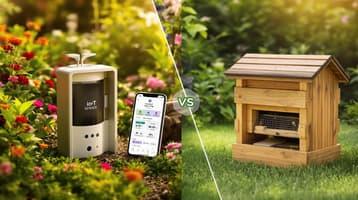
IoT vs. Traditional Pest Monitoring Systems
Explore the efficiency and accuracy of IoT pest monitoring systems compared to traditional methods, and discover which is best for your garden.
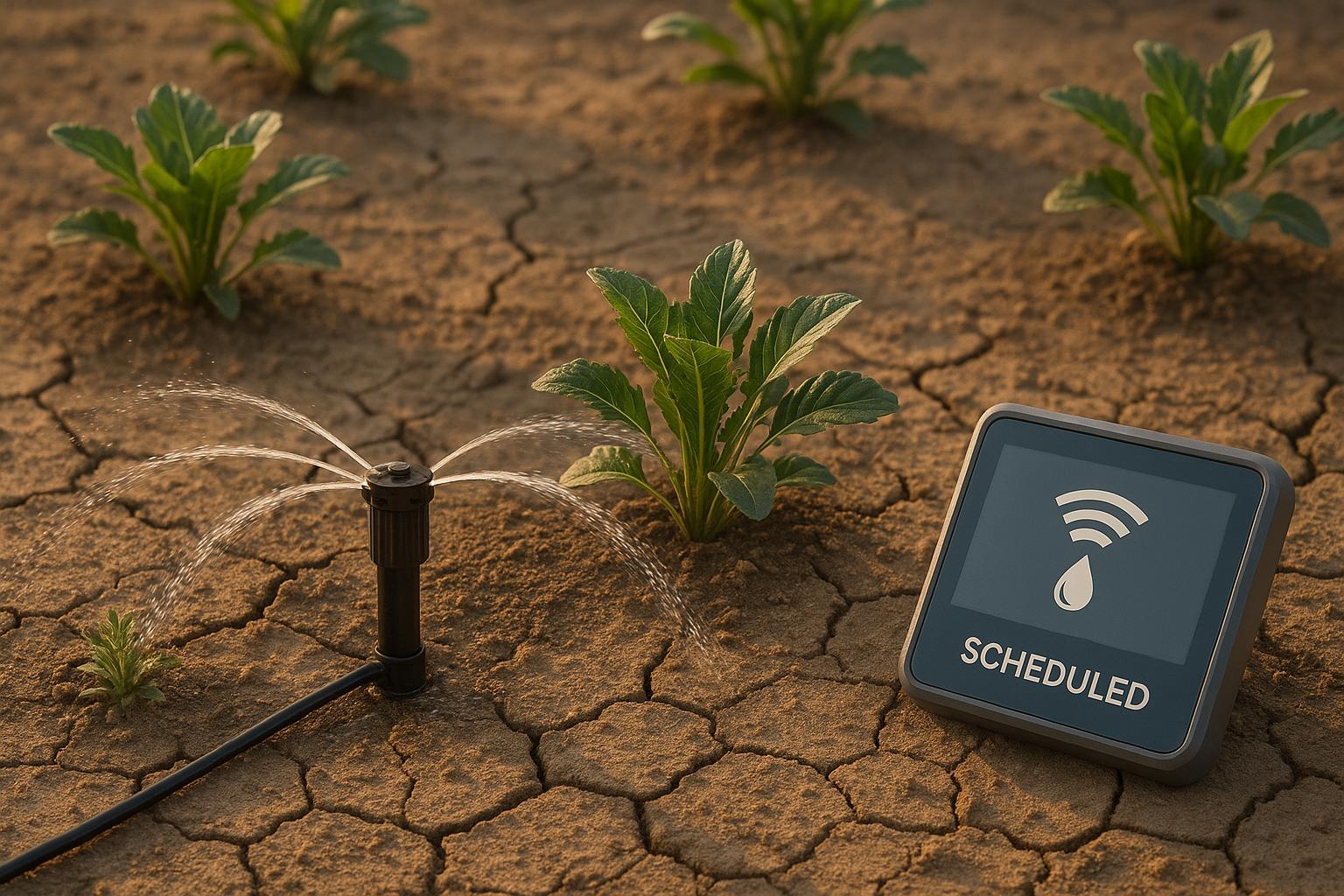
AI Watering Schedules for Drought Conditions
AI-driven irrigation systems optimize water use during droughts, improving plant health and conserving resources through real-time data and machine learning.
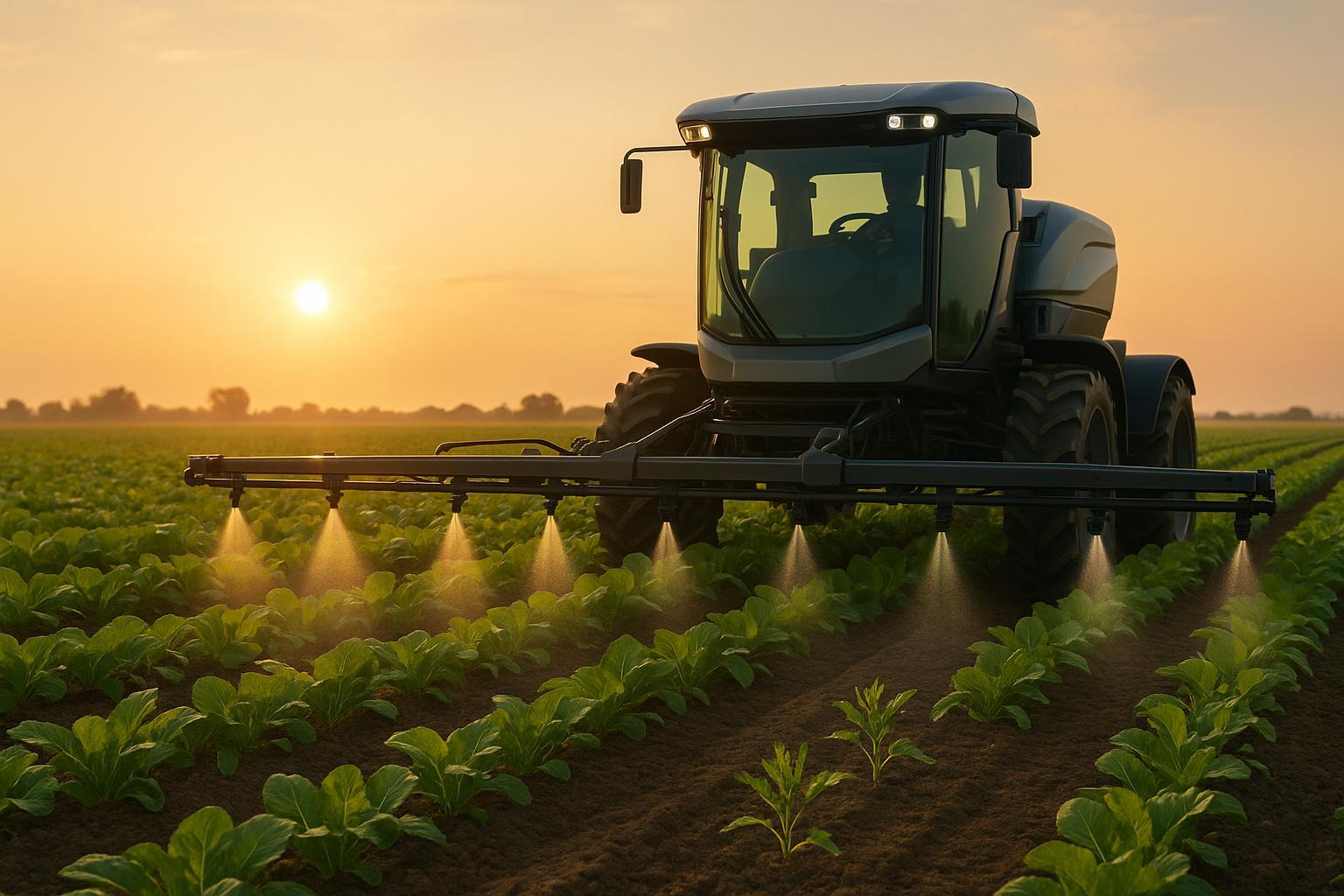
What Is Green-on-Green Spray Technology?
Explore how green-on-green spray technology revolutionizes weed control by using AI for precise herbicide application, reducing chemical use significantly.

AI Tools for Designing Seasonal Garden Features
Explore how AI tools streamline seasonal garden design with personalized plans, plant suggestions, and visualizations for year-round beauty.
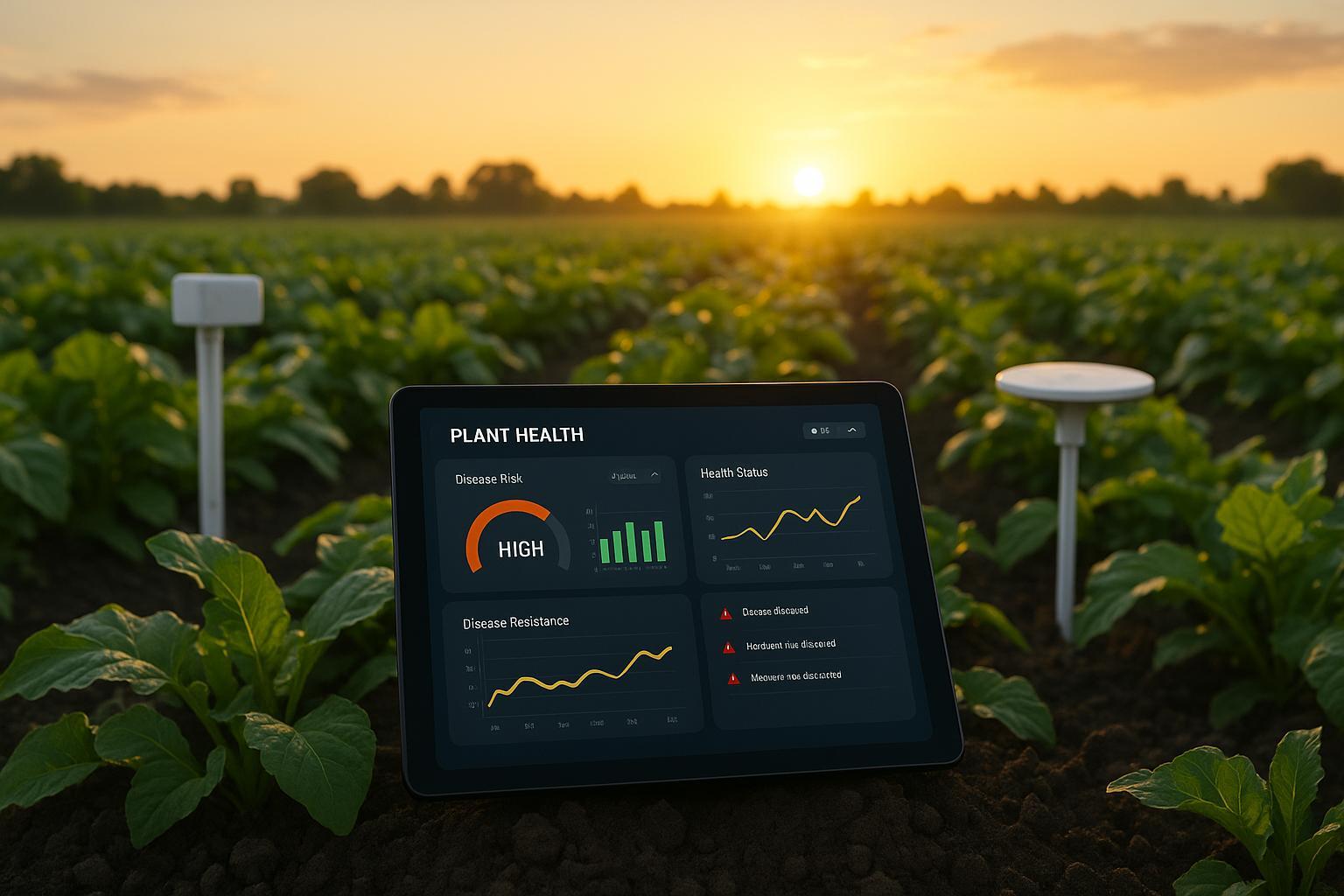
IoT and AI for Disease Resistance Forecasting
Explore how IoT and AI are revolutionizing plant disease resistance forecasting, enhancing crop health and efficiency in agriculture.

AI Pest Identification vs. Traditional Methods
Explore how AI pest identification outperforms traditional methods by enhancing accuracy, speed, and environmental sustainability in pest management.